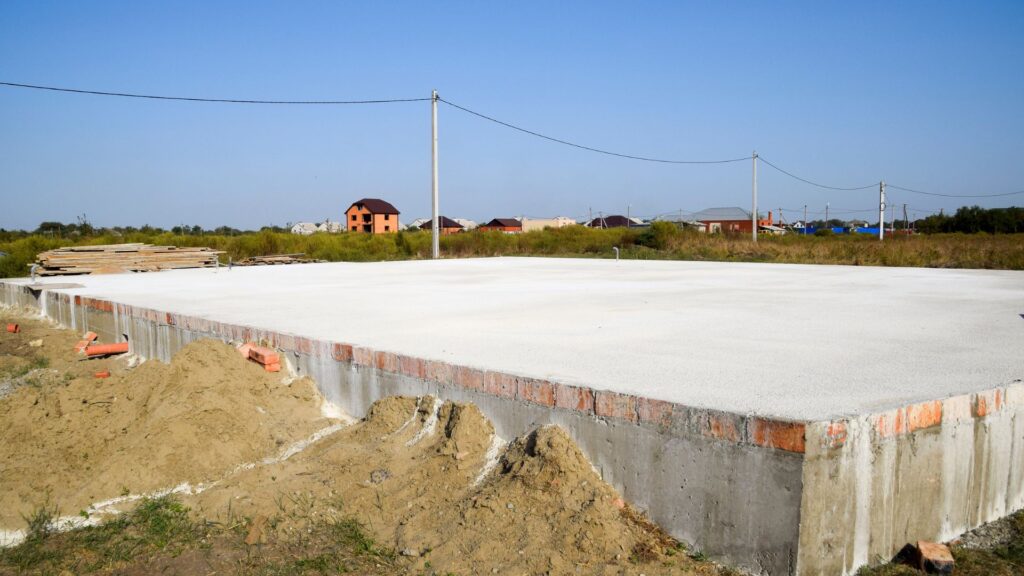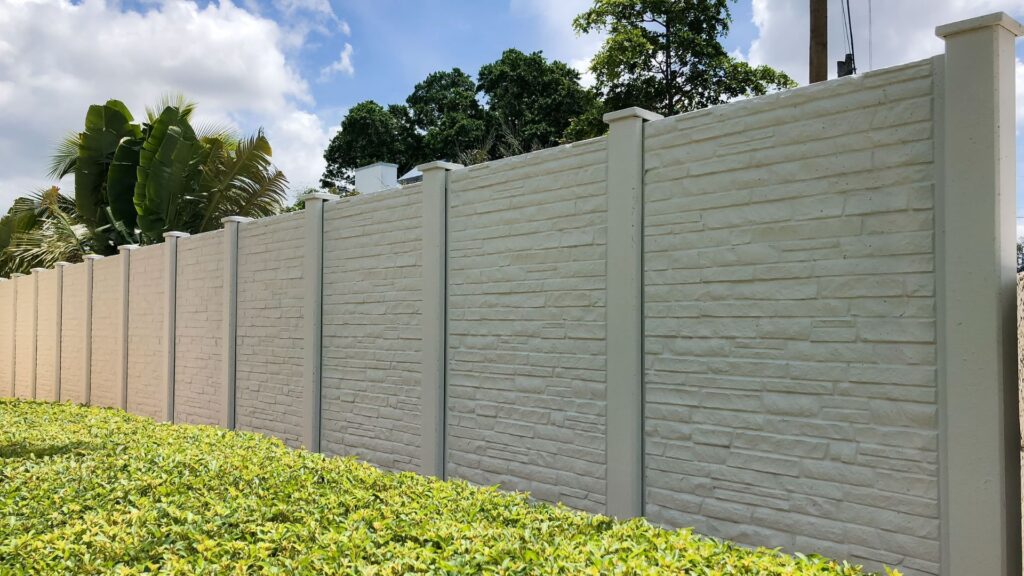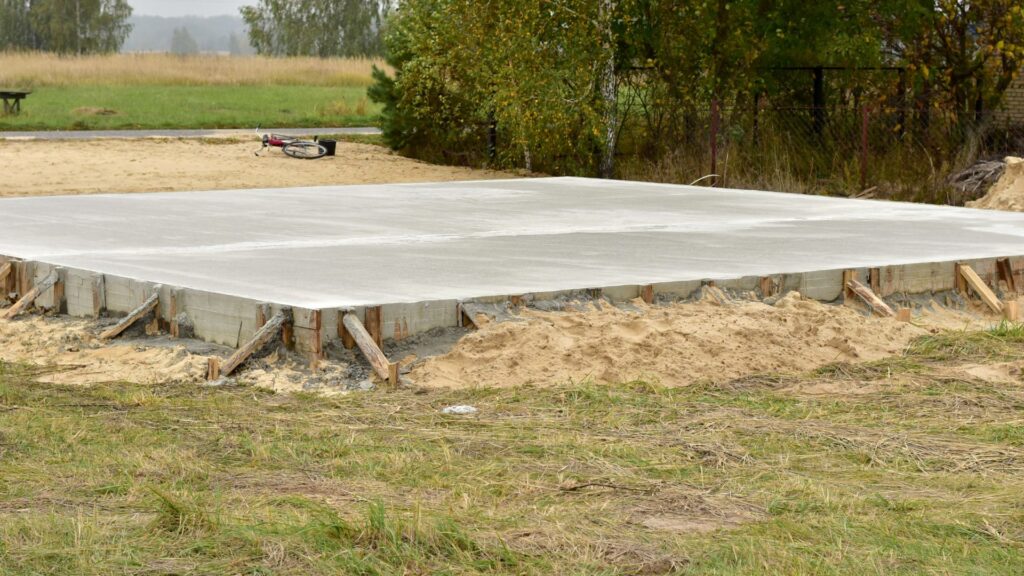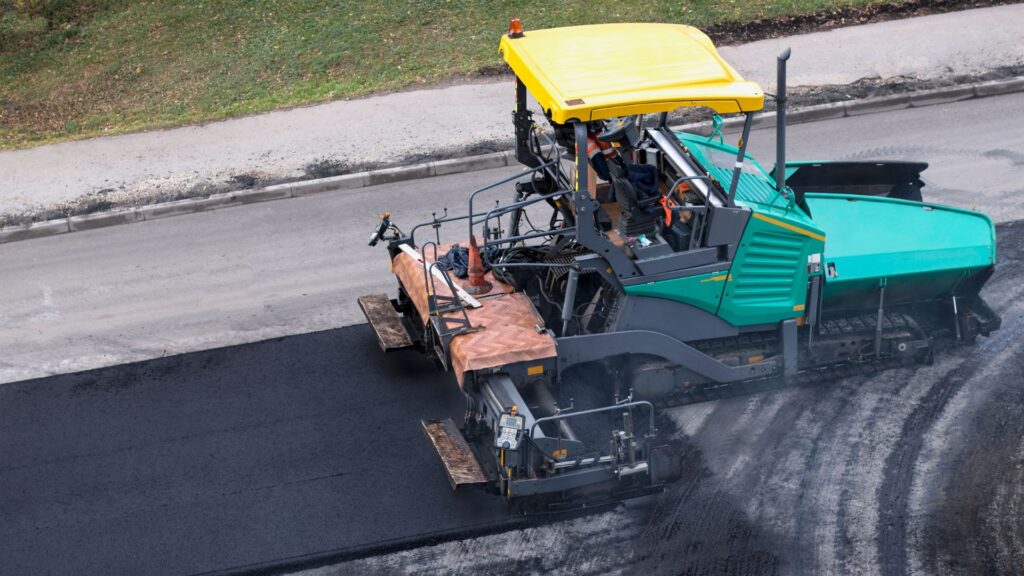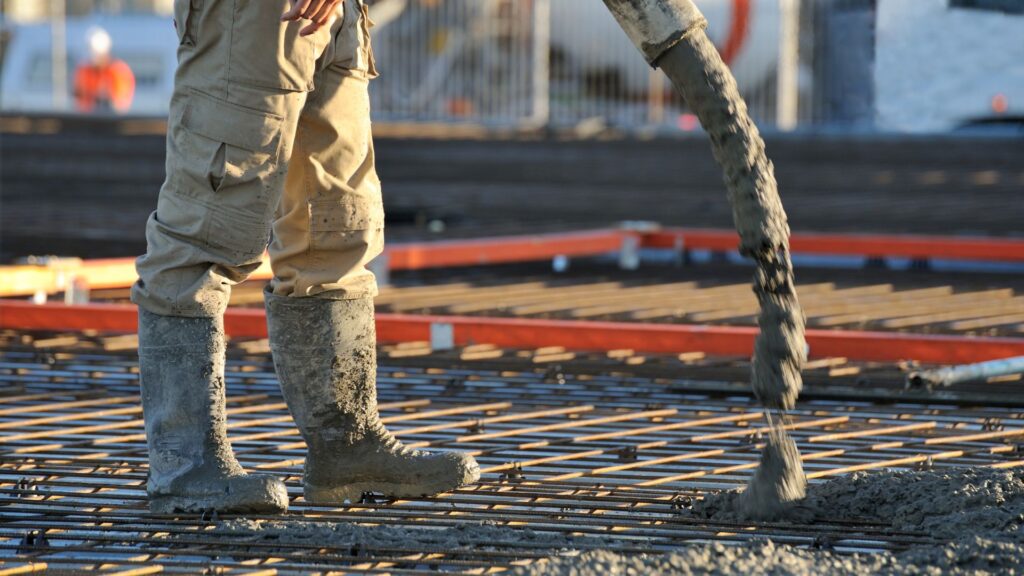Welcome to our ultimate guide on concrete slab foundation costs in New Zealand! Whether you’re building a new home, planning a renovation, or investing in property, understanding the costs involved in laying a solid foundation is crucial. Concrete slab foundations are one of the most popular choices in NZ due to their durability, affordability, and suitability for various soil conditions. However, the total cost can vary significantly based on factors like site preparation, slab thickness, reinforcement, and labour fees. In this guide, we’ll break down everything you need to know about pricing, hidden costs, and money-saving tips to help you budget smartly and make informed decisions for your construction project.
The cost of a concrete slab foundation in NZ typically ranges from $100 to $200 per square meter, depending on factors like site preparation, slab thickness, and reinforcement requirements. For a 100m² home, costs start at around $10,000–$25,000, while larger homes (150–250m²) can range from $25,000 to $70,000+. Additional expenses, such as soil testing, drainage, and council approvals, may also impact the total cost. To get an accurate estimate, it’s best to consult with local contractors and request a detailed quote.
What Is A Concrete Slab Foundation?
A Concrete Slab Foundation is a flat, thick layer of concrete that forms the base of a building, providing stability and structural integrity. It is one of the most widely used foundation types in New Zealand due to its cost-effectiveness, durability, and ease of construction. Unlike other foundation systems, such as pile or basement foundations, a concrete slab is poured directly onto the prepared ground, creating a strong, solid base that evenly distributes the weight of the structure.
Why A Concrete Slab Foundation Is Popular In NZ
New Zealand’s unique geological and climatic conditions make concrete slab foundations a preferred choice for many builders and homeowners. Several factors contribute to their popularity:
- Durability: New Zealand is prone to earthquakes, particularly in regions near fault lines. Concrete slab foundations provide excellent resistance against seismic activity, reducing the risk of structural failure. Additionally, they withstand extreme weather conditions, including heavy rain and strong winds.
- Low Maintenance: Compared to other foundation types, such as timber piles or basement foundations, concrete slabs require minimal maintenance over time. They are not susceptible to rot, pest infestations, or moisture-related damage.
- Affordability And Efficiency: Concrete slabs are generally more cost-effective than alternative foundation systems. The construction process is relatively quick, reducing labor costs and allowing projects to progress faster. Their efficiency in material use and installation makes them an attractive option for both residential and commercial buildings.
Types Of Concrete Slab Foundations
Different types of concrete slab foundations are used in New Zealand, each suited to specific ground conditions and building requirements. The most common types include:
- Standard Slab-On-Grade: This is the most commonly used concrete slab foundation in New Zealand. It is a single, continuous layer of concrete poured directly onto a prepared and leveled ground surface. Slab-on-grade foundations are ideal for stable soil conditions and are widely used in residential housing developments.
- Waffle Slabs: This type of foundation features a grid-like system of concrete beams that sit above the ground, creating a waffle-like pattern underneath the slab. Waffle slabs are specifically designed for areas with expansive or reactive soils, where ground movement can occur due to moisture changes. The raised grid structure helps distribute weight more evenly and prevents cracking.
- Raft Foundations: Also known as a floating foundation, a raft foundation consists of a thick, reinforced concrete slab that covers the entire building footprint. This type is particularly useful for weak or unstable soils, as it spreads the building load over a larger area, reducing pressure on the ground. Raft foundations are commonly used in areas with soft, compressible soils or high water tables.
A concrete slab foundation is a reliable, long-lasting, and cost-effective choice for homes and commercial buildings across New Zealand. With various types available, builders and homeowners can select the best option based on soil conditions, seismic risks, and budget considerations. Whether it’s a standard slab-on-grade, a waffle slab, or a raft foundation, this foundation type provides a solid base for any structure, ensuring stability and longevity.
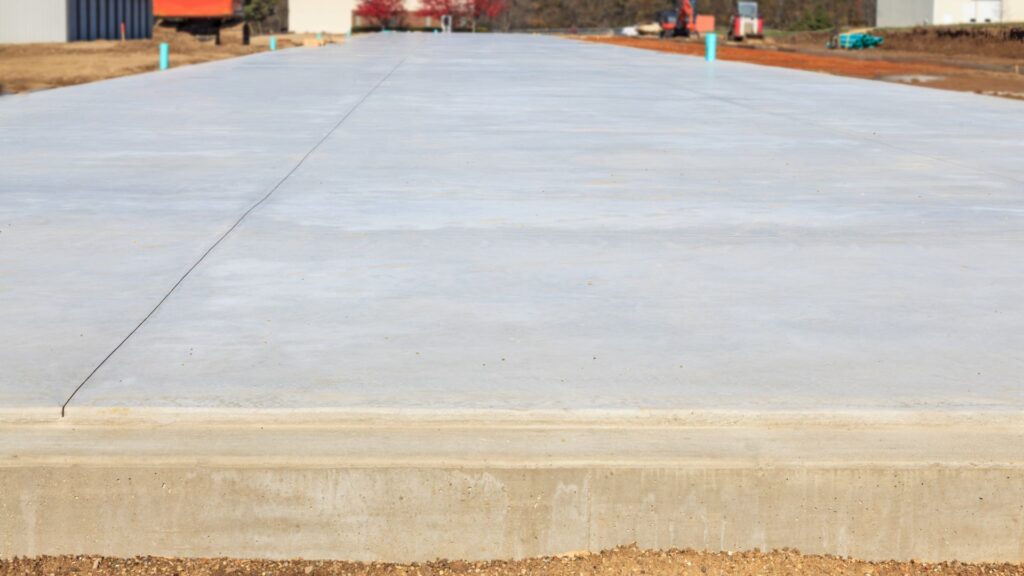
How Much Does A Concrete Slab Foundation Cost In NZ?
When planning a construction project in New Zealand, one of the most significant costs to consider is the foundation. A concrete slab foundation is one of the most common and reliable choices for homes due to its durability, affordability, and suitability for various soil conditions. However, the cost of laying a concrete slab foundation can vary widely depending on multiple factors, including size, location, soil conditions, and additional features.
In this section, we’ll provide a detailed breakdown of concrete slab foundation costs in NZ, including average price estimates for different home sizes and a comprehensive look at the key factors influencing pricing.
Average Cost Estimates
The cost of a concrete slab foundation in New Zealand is generally calculated per square meter, with prices typically ranging between $100 and $200 per m². The total price depends on the complexity of the site, concrete thickness, reinforcement needs, and labor costs.
Below is an estimated price range for 2024, categorized by home size:
- Small Home (50–100m²): $10,000 – $25,000
- Medium Home (100–150m²): $25,000 – $40,000
- Large Home (150–250m²): $40,000 – $70,000+
These estimates are based on standard site conditions. However, costs can increase if the site requires additional work such as excavation, soil stabilization, or drainage improvements.
Factors Affecting the Cost
The final cost of a concrete slab foundation depends on several factors. Below, we’ll explore the most important aspects that can influence pricing.
1. Size Of The Foundation
The larger the foundation, the more materials and labor will be required, which naturally increases the total cost.
- Smaller foundations for compact homes or granny flats will be more affordable.
- Larger homes require more concrete, steel reinforcement, and excavation work, all of which add to the expenses.
2. Soil Conditions & Site Preparation
Not all land is immediately ready for a concrete slab foundation. Some sites require extensive preparation, which can significantly impact the budget.
- If the site needs excavation, leveling, or additional drainage, these additional steps will add to the total cost.
- Areas with clay-heavy or unstable soil may need deeper footings and extra reinforcement to ensure stability, further increasing costs.
- Rocky terrain or sloped sites require specialized work to prepare the ground for construction, making the project more expensive.
3. Concrete Type & Thickness
The type and thickness of the concrete slab play a crucial role in determining the overall cost.
- A standard slab thickness in NZ is 100mm, which is typically the most cost-effective option.
- For homes that require extra durability due to heavy loads (such as multi-story buildings or garages), a 150mm thick slab may be necessary, which increases material costs.
- The strength of the concrete, measured in MPa (megapascals), also affects pricing. Higher MPa-rated concrete is more expensive but provides greater durability and resistance to cracking.
4. Reinforcement & Engineering Requirements
Most concrete slabs need some form of reinforcement to enhance their strength and durability.
- Steel mesh and rebar are commonly used to prevent cracking and improve load distribution. However, these materials add to the overall cost.
- Homes built in earthquake-prone zones, such as Wellington and Christchurch, may require extra seismic reinforcement, increasing construction expenses.
- Some projects may also require customized engineering solutions based on soil tests, which can add to design and construction costs.
5. Labour & Contractor Fees
The cost of labor varies depending on the location and the experience level of the contractor.
- Hiring an experienced builder ensures a high-quality foundation but may come at a premium.
- Labour rates are typically higher in major cities like Auckland, Wellington, and Christchurch, compared to regional areas.
- Contractors may charge separately for excavation, pouring, finishing, and curing, so it’s important to get a detailed quote to avoid unexpected costs.
6. Additional Features
Some homeowners choose to upgrade their concrete slab foundation with additional features that enhance comfort and energy efficiency. These optional add-ons can increase costs but provide long-term benefits.
- Underfloor Heating Systems: Installing heating pipes or electric heating elements within the slab adds upfront costs but can improve energy efficiency and comfort, especially in colder regions.
- Waterproofing & Insulation: In some climates, especially in damp or flood-prone areas, it may be necessary to apply waterproofing treatments to prevent moisture issues. Additionally, insulating the slab can help improve indoor temperature regulation.
The cost of a concrete slab foundation in New Zealand depends on various factors, including size, soil conditions, reinforcement needs, and labor rates. While the average price per square meter ranges from $100 to $200, homeowners should also factor in additional costs such as excavation, waterproofing, and site preparation.
To get the most accurate cost estimate, it’s recommended to obtain multiple quotes from local contractors and consider all potential cost factors before finalizing your budget. By planning ahead and making informed decisions, you can ensure a high-quality, cost-effective foundation for your home.
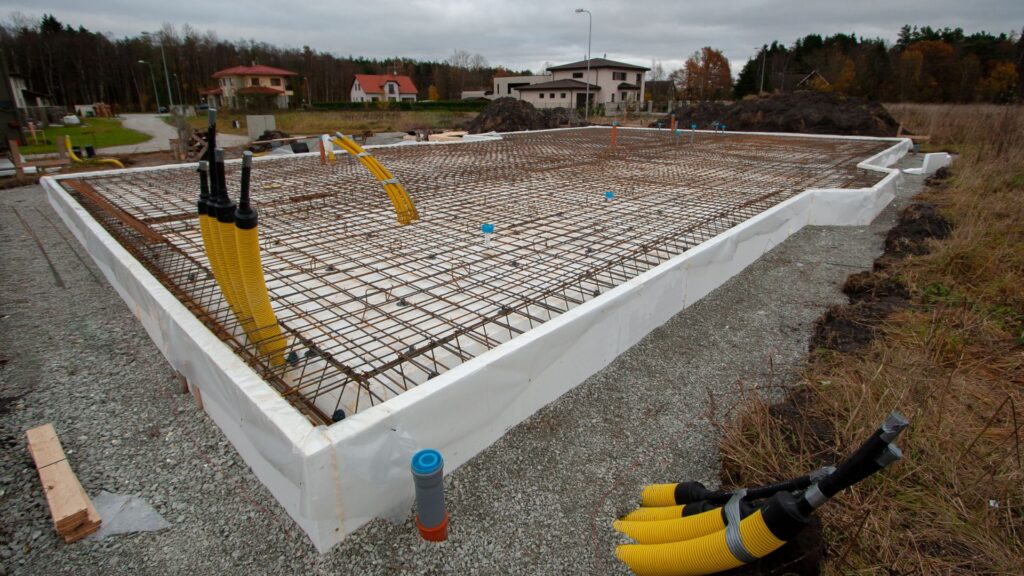
Hidden Costs & Budget Considerations
When planning for a concrete slab foundation in New Zealand, it’s easy to focus solely on the primary costs, such as materials and labor. However, there are hidden costs that can significantly impact your budget if not accounted for in advance. Understanding these additional expenses and knowing how to manage them effectively can prevent unexpected financial strain and keep your construction project on track.
Additional Costs To Factor In
While the base price of a concrete slab foundation typically covers the cost of concrete, reinforcement, and labor, several other expenses may arise throughout the process. Here are some critical additional costs to consider:
- Building Consent & Council Fees: Before any construction can begin, homeowners must obtain the necessary permits from their local council. These fees vary depending on the region and the scope of the project. Failing to secure the required approvals can lead to fines, legal issues, or costly modifications to meet compliance standards. It’s essential to factor in these regulatory costs from the beginning.
- Site Surveys And Soil Testing: Not all land is suitable for immediate construction. Soil conditions play a crucial role in determining the stability and longevity of a concrete slab foundation. A professional soil test can reveal whether additional ground preparation is needed, such as compaction or reinforcement. While this adds to the overall cost, it ensures the foundation remains structurally sound and prevents costly repairs in the future.
- Drainage And Plumbing Provisions: A well-planned drainage system is essential for preventing water accumulation under or around the foundation. In many cases, proper drainage solutions, such as trenching or gravel layers, need to be installed before pouring the slab. Additionally, plumbing provisions, including water and sewer lines, must be set in place before the concrete is poured. If overlooked, retrofitting these features later can be far more expensive and labor-intensive.
How To Avoid Budget Blowouts
Managing costs effectively requires strategic planning and informed decision-making. To keep your foundation project within budget, consider the following steps:
- Get Multiple Quotes From Different Contractors: Prices for concrete slab foundations can vary significantly depending on the contractor. By obtaining multiple quotes, you can compare pricing, identify potential cost savings, and ensure you are getting fair market value. Look for contractors with a strong track record and positive reviews to avoid subpar workmanship that could lead to additional expenses.
- Ensure A Detailed Contract Outlining All Costs Before Construction: One of the most common causes of budget overruns is unexpected expenses that arise due to vague or incomplete contracts. Before committing to a contractor, request a detailed breakdown of all costs, including materials, labor, site preparation, and additional services. A well-defined contract helps prevent misunderstandings and provides clarity on what is covered in the quoted price.
- Consider Prefabricated Slab Solutions For Cost Efficiency: Prefabricated concrete slabs, also known as precast slabs, offer a more cost-effective and time-efficient alternative to traditional on-site pouring. These slabs are manufactured in controlled environments, ensuring higher quality and reducing labor costs. Additionally, prefabricated slabs can minimize waste and speed up the construction timeline, ultimately leading to savings on overall project expenses.
By carefully considering these hidden costs and taking proactive measures to avoid budget overruns, you can ensure your concrete slab foundation project remains financially manageable. Proper planning, thorough research, and working with reputable contractors will help you achieve a high-quality foundation without unexpected financial strain.
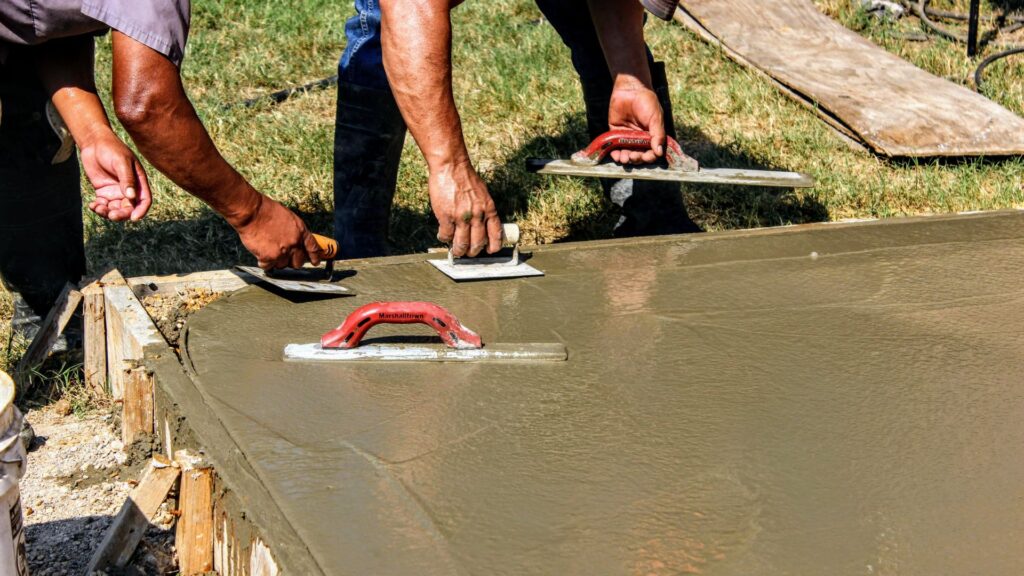
Ways To Save Money On Your Concrete Slab Foundation
Building a home or any structure is a significant investment, and the foundation is one of the most crucial aspects. While a concrete slab foundation is a cost-effective option compared to other foundation types, expenses can still add up quickly. Fortunately, there are several strategic ways to reduce costs without compromising on quality or durability. Below are practical tips to help you save money when planning your concrete slab foundation.
Choose The Right Slab Type Based On Location And Soil Conditions
One of the biggest cost factors in a concrete slab foundation is the type of slab you choose. Selecting the right slab design for your specific location and soil conditions can prevent unnecessary expenses down the road.
- Standard Slab-On-Grade: Ideal for stable soil with minimal movement. This is the most affordable and commonly used slab type in New Zealand.
- Waffle Slabs: Best suited for areas with reactive soil that expands and contracts due to moisture levels. While slightly more expensive, they can prevent costly foundation repairs in the future.
- Raft Foundations: Designed for weak or unstable soil conditions. Though this option may be more expensive upfront, it reduces the risk of foundation failures that can lead to major structural issues.
Consulting with a soil engineer before construction can help determine the most cost-effective and durable foundation type for your specific location. Skipping this step may lead to expensive modifications later.
Source Materials Locally To Cut Transport Costs
The cost of transporting materials can significantly impact your overall foundation budget. Opting for local suppliers rather than ordering materials from distant locations can help reduce expenses in several ways:
- Lower Delivery Fees: Transporting heavy materials like cement, rebar, and gravel over long distances increases shipping costs.
- Faster Delivery: Local suppliers often provide quicker delivery, reducing project delays and potential storage costs.
- Better Pricing Negotiation: Working with local vendors allows for bulk discounts and long-term relationships that can result in cost savings on future projects.
Before making any purchases, compare prices from multiple suppliers and inquire about special offers or discounts for large orders.
Schedule Construction During Off-Peak Seasons To Get Better Rates
Construction demand fluctuates throughout the year, and scheduling your foundation work during off-peak seasons can lead to significant savings. Most contractors charge higher rates during peak building seasons when demand is high, typically in spring and summer.
To cut costs:
- Plan Construction In Late Autumn Or Winter: While weather conditions can be a factor, many contractors offer lower prices during slower months.
- Book Contractors In Advance: If you have flexibility with your timeline, securing a contractor well before peak season can lead to better pricing.
- Take Advantage Of Seasonal Promotions: Some suppliers and contractors provide discounts or special offers during less busy periods to attract more clients.
By choosing the right time for construction, you can negotiate lower labor costs and reduce overall expenses.
Consider DIY Preparation Work If Feasible
While pouring and finishing a concrete slab foundation requires professional expertise, there are certain preparation tasks you may be able to handle yourself to cut costs. These tasks include:
- Site Clearing: Removing debris, vegetation, or old foundations before the contractor arrives can reduce labor costs.
- Excavation And Leveling: If you have access to excavation equipment or can rent it at a lower cost, performing basic site leveling can save you money.
- Formwork Assistance: Helping with setting up the wooden forms for the slab can reduce labor expenses.
However, it’s essential to evaluate your skill level before attempting any DIY work. Mistakes in excavation or site preparation can lead to costly errors, requiring professional fixes that could negate any savings.
Negotiate With Contractors And Ask About Bulk Discounts
Many homeowners overlook the potential savings that come from negotiation when hiring contractors and purchasing materials. Skilled negotiation can lead to better rates and discounts that significantly reduce your overall project cost.
- Get Multiple Quotes: Always request quotes from at least three contractors to compare prices and services. This allows you to choose the best value for your budget.
- Ask About Bulk Discounts: If your project requires a large amount of concrete, reinforcement materials, or other supplies, inquire about bulk purchasing discounts.
- Bundle Services: If your contractor provides excavation, plumbing, or other related services, bundling these together may result in cost savings.
- Discuss Payment Options: Some contractors offer lower prices for upfront payments, while others may provide discounts for flexible payment plans.
By taking the time to compare pricing and negotiate, you can secure better deals and keep your foundation costs within budget.
A concrete slab foundation is an essential part of any construction project, and while costs can add up, strategic planning can help you minimize expenses without sacrificing quality. By choosing the right slab type, sourcing local materials, scheduling construction during off-peak seasons, handling some preparation work yourself, and negotiating with contractors, you can significantly reduce costs and keep your project on track.
When planning your foundation, always prioritize long-term durability over short-term savings. Cutting corners on materials or workmanship may lead to expensive repairs in the future. Investing in a well-built, cost-efficient concrete slab foundation ensures a strong and stable base for your home or building project.

Common Mistakes To Avoid When Budgeting For A Concrete Slab
Budgeting for a concrete slab foundation requires careful planning, but many homeowners and builders make costly mistakes that can lead to unexpected expenses or structural issues down the line. Understanding these pitfalls can help you make informed decisions and ensure your project stays on track. Below are some of the most common mistakes to avoid when estimating the cost of a concrete slab foundation in New Zealand.
Underestimating Site Preparation Costs
One of the biggest mistakes people make when budgeting for a concrete slab is failing to account for site preparation costs. Many assume that once they purchase materials and hire a contractor, they are good to go. However, preparing the site is often a complex process that can add thousands of dollars to the total cost.
Site preparation involves clearing the land, leveling the ground, and ensuring proper drainage before pouring the slab. If the site has excessive slopes, clay-heavy soil, or requires excavation, additional work such as cut-and-fill leveling or soil stabilization may be necessary. These processes require extra labor, machinery, and materials, all of which increase the budget.
To avoid unexpected costs, it is crucial to have a professional assess the site conditions before construction begins. Conducting a thorough site evaluation will help identify potential challenges and allow you to allocate funds appropriately for excavation, grading, and drainage solutions.
Choosing The Cheapest Contractor Without Checking Reviews
It is tempting to choose the lowest bid when hiring a contractor, but going with the cheapest option can lead to poor workmanship, project delays, and even structural failures. Some contractors cut corners by using lower-quality materials or skipping essential steps in the construction process, which can compromise the durability and safety of your foundation.
Before selecting a contractor, it is essential to do thorough research. Check online reviews, ask for references, and look for testimonials from past clients. A reputable contractor should have a history of completing projects on time, adhering to building codes, and using high-quality materials.
Additionally, ensure the contractor provides a detailed quote that includes all aspects of the job, such as site preparation, materials, labor, and finishing costs. If a quote seems significantly lower than others, it could be a red flag that the contractor is either inexperienced or planning to cut costs in ways that may impact the structural integrity of your foundation.
Skipping Soil Testing, Which Could Lead to Future Structural Issues
Soil testing is an essential step in the foundation planning process, yet many homeowners skip it to save money. However, failing to test the soil can result in significant problems, including foundation cracks, shifting, or even failure over time.
Different soil types react differently to moisture and weight. For example, clay-heavy soil expands and contracts with changes in moisture levels, which can lead to movement and cracking in the foundation. Sandy soil, on the other hand, may require additional reinforcement to provide stability.
A professional soil test assesses the soil composition, drainage capacity, and load-bearing capacity of the land. If the soil conditions are poor, additional measures such as deeper footings, compacted fill, or a reinforced slab design may be necessary to ensure long-term stability.
Skipping this step can result in costly repairs later on, as poorly supported foundations can develop cracks, uneven settling, and drainage issues. Investing in soil testing upfront can save thousands of dollars in repair costs and give you peace of mind that your foundation is built to last.
Ignoring Long-Term Durability Over Short-Term Savings
Many homeowners focus solely on minimizing initial construction costs, often at the expense of long-term durability. While it may seem cost-effective to use standard materials and basic slab designs, cutting corners in these areas can lead to higher maintenance and repair costs in the future.
For example, opting for a thinner slab to reduce costs might not provide enough strength to support heavy loads, leading to cracks and structural weaknesses over time. Similarly, skipping reinforcement materials such as steel mesh or rebar can result in a weaker foundation that is more prone to shifting and damage.
Another common mistake is neglecting proper waterproofing and insulation. Without adequate insulation, your slab may be prone to heat loss, leading to higher energy bills. Poor waterproofing can also allow moisture to seep into the concrete, causing deterioration, mold growth, and weakening of the structure.
To ensure long-term durability, consider using high-quality materials, investing in proper reinforcement, and implementing drainage solutions that prevent water damage. Although these measures may increase upfront costs, they can significantly extend the lifespan of your foundation and save you from expensive repairs in the future.
Final Thoughts
Budgeting for a concrete slab foundation goes beyond just calculating material and labor costs. Failing to account for site preparation, hiring the wrong contractor, skipping soil testing, or focusing too much on short-term savings can lead to costly issues later on. Taking a well-planned approach and working with experienced professionals will ensure that your foundation is structurally sound, durable, and built to withstand New Zealand’s unique climate and geological conditions.
Ready to start your construction project? Get a reliable and cost-effective concrete slab foundation with expert guidance. Contact us today for a free quote and professional advice on building the perfect foundation for your home in NZ!
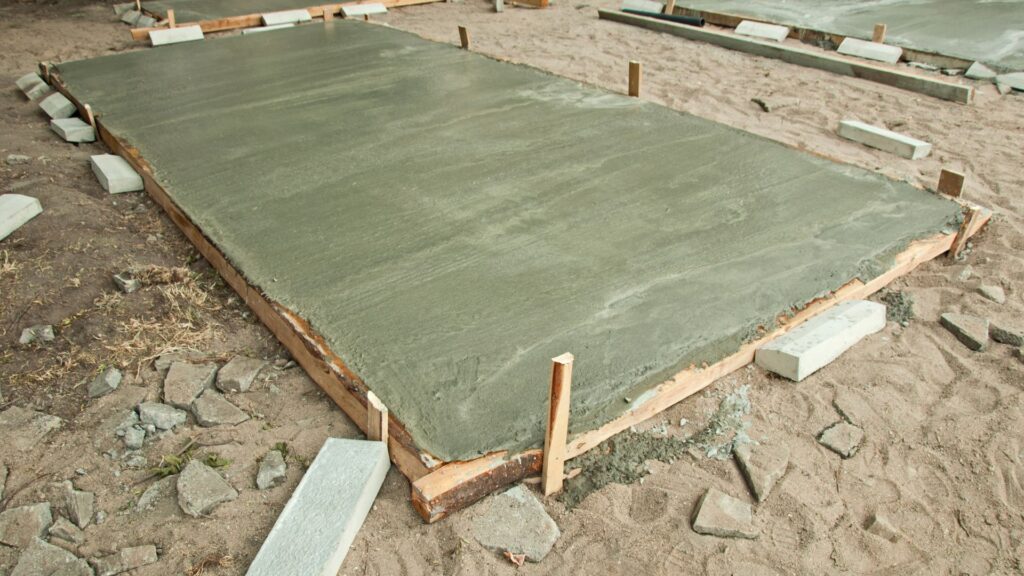
FAQs: About Concrete Slab Foundation Cost NZ
The cost of a concrete slab foundation in NZ typically ranges from $100 to $200 per square meter, depending on factors like slab thickness, soil conditions, and site preparation. For a 100m² home, costs start at around $10,000–$25,000, while larger homes (150–250m²) can range from $25,000 to $70,000+.
Several factors affect the total cost, including site preparation, soil conditions, concrete thickness, reinforcement requirements, labour costs, and additional features like insulation or underfloor heating.
Yes, in many cases, a concrete slab foundation is more cost-effective than pile or basement foundations. However, if the site requires significant excavation or reinforcement, the cost may be comparable to other foundation types.
A standard residential concrete slab in New Zealand is typically 100mm (10cm) thick, but some projects may require 150mm (15cm) or more, especially for heavy loads or poor soil conditions.
Yes, all foundation work in New Zealand requires building consent from the local council. You’ll need to comply with the NZ Building Code and ensure the foundation meets engineering and safety standards.
The pouring process typically takes one to two days, but the slab needs about 28 days to fully cure and reach its maximum strength. During this time, contractors may recommend keeping the slab moist to prevent cracking.
Yes, installing polystyrene insulation under a concrete slab improves thermal efficiency and helps with energy savings. It’s commonly used in homes aiming for better energy performance, especially in colder regions of NZ.
Hidden costs can include site excavation, soil testing, drainage installation, reinforcement materials, waterproofing, and engineering fees. It’s essential to get a detailed quote from contractors to avoid unexpected expenses.
To reduce costs, consider sourcing materials locally, scheduling construction during off-peak seasons, preparing the site yourself (if possible), and getting multiple quotes from contractors. Prefabricated slab solutions can also help cut costs.
Yes, but in earthquake-prone areas, the slab may require additional seismic reinforcement, such as steel reinforcements, flexible connections, or a floating raft foundation. A structural engineer can assess the best approach based on the local ground conditions.
Conclusion
Understanding the Concrete Slab Foundation Cost In NZ is essential for homeowners and builders looking to make informed financial decisions. Several factors influence the final price, including the size of the foundation, site conditions, concrete thickness, reinforcement requirements, and additional features like insulation or underfloor heating. Costs typically range from $100 to $200 per square meter, with total expenses varying depending on project complexity and location. To avoid unexpected costs, it’s crucial to plan ahead, account for hidden expenses such as site preparation and council fees, and explore cost-saving strategies like sourcing materials locally or scheduling construction during off-peak seasons. One of the best ways to secure a fair price and high-quality workmanship is to get multiple quotes from reputable contractors, ensuring a transparent and competitive bidding process. Budgeting wisely and working with experienced professionals can help you achieve a durable and cost-effective foundation without unnecessary financial strain. If you have any questions or insights about your construction plans, feel free to share your thoughts in the comments or reach out for expert advice.
About the Author:
Mike Veail is a recognized digital marketing expert with over 6 years of experience in helping tradespeople and small businesses thrive online. A former quantity surveyor, Mike combines deep industry knowledge with hands-on expertise in SEO and Google Ads. His marketing strategies are tailored to the specific needs of the trades sector, helping businesses increase visibility and generate more leads through proven, ethical methods.
Mike has successfully partnered with numerous companies, establishing a track record of delivering measurable results. His work has been featured across various platforms that showcase his expertise in lead generation and online marketing for the trades sector.
Learn more about Mike's experience and services at https://theleadguy.online or follow him on social media:

